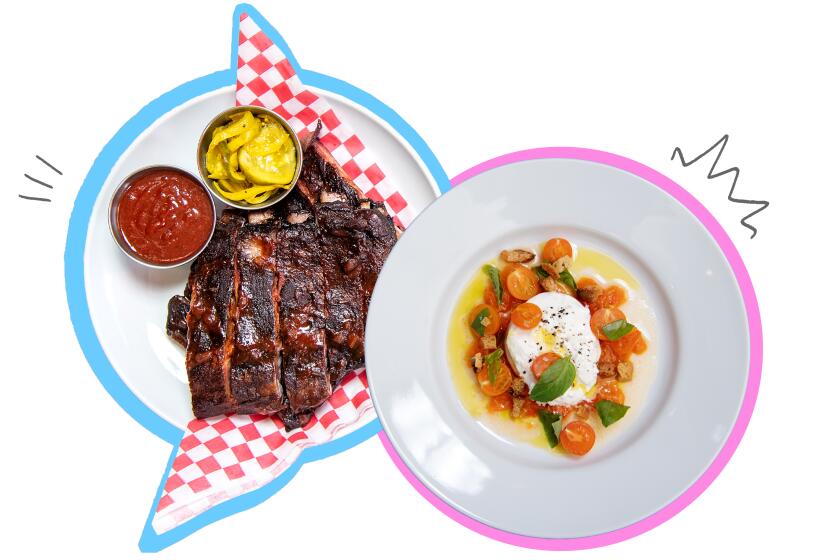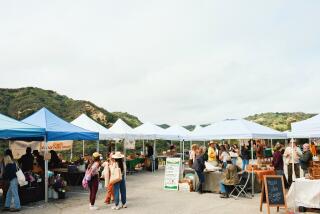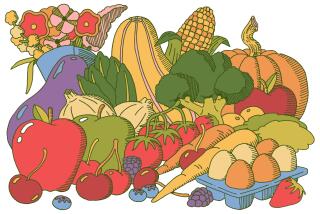At the Santa Monica Farmers Market, vendors and customers adjust to a new normal

- Share via
In some ways, it felt like business as usual at the Santa Monica Farmers Market on Wednesday.
Parsnips, carrots and heirloom potatoes crowded tables at Weiser Family Farms. A scattering of shoppers wore masks; others wore bandannas over their faces.
Fragrant kumquats and mandarins from Garcia Organic Farms resembled vivid orange gemstones. All the vendors wore disposable gloves; some stands erected improvised barriers to distance sellers from buyers.
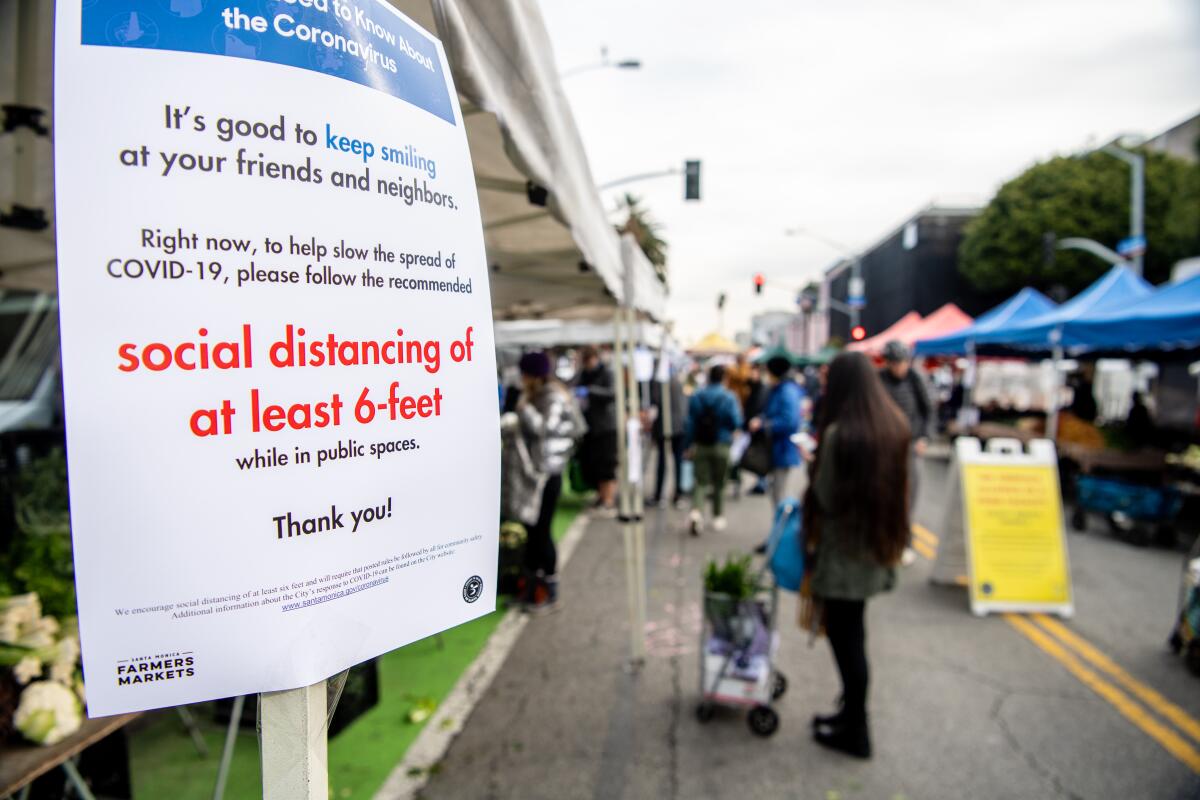
“It’s been slower today,” said Kevin Yasutomi, who operates Pico Rivera-based Yasutomi Farm with his 60-year-old mother, Ruriko. “But we’re still getting used to all the changes at this point.”
Those changes, implemented late last week under guidance from the Los Angeles County Department of Public Health, were significant: no prepared foods, no sampling, a minimum of 10 feet between booths, increased hand-washing stations, and no direct exchange of money between customers and vendors who were handling fruits and vegetables.
A majority of vendors sold produce portioned and packaged in plastic bags to reduce exposure.
Amanda Broder-Hahn of Windrose Farms said she was conflicted about selling at the market — she had herbs and fennel to sell but was worried about the people on her side of the table.
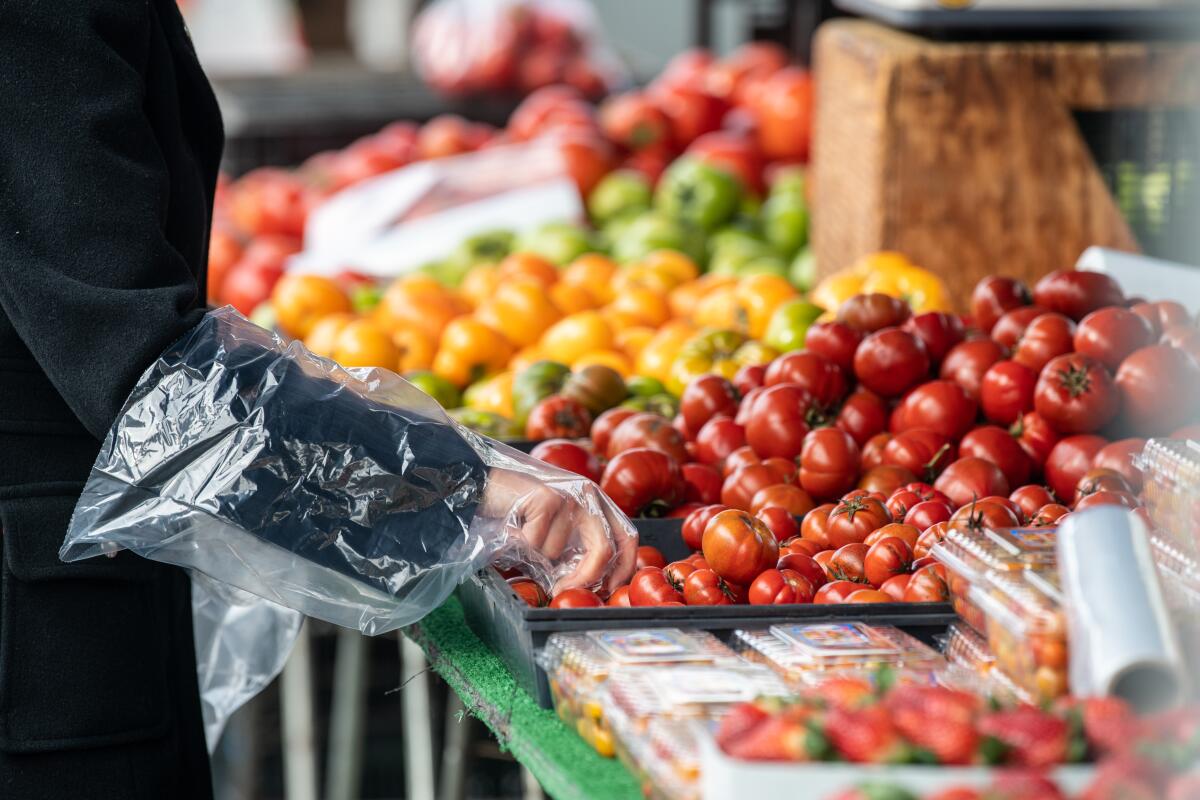
“There was a statistic a few years ago that said 80% of small farmers in America are over 50 years old,” she said. “That’s a huge part of our community that is vulnerable right now.”
At the request of market management, some elderly vendors made the decision not to attend, including Windrose Farm’s Bill and Barbara Spencer.
“Bill and I are both in our 70s, which makes us a high-risk group,” wrote Barbara Spencer in an email to The Times. “The food we and our fellow farmers grow is so vital to people, even more today, but being prudent was also an important choice for everyone at Windrose.”
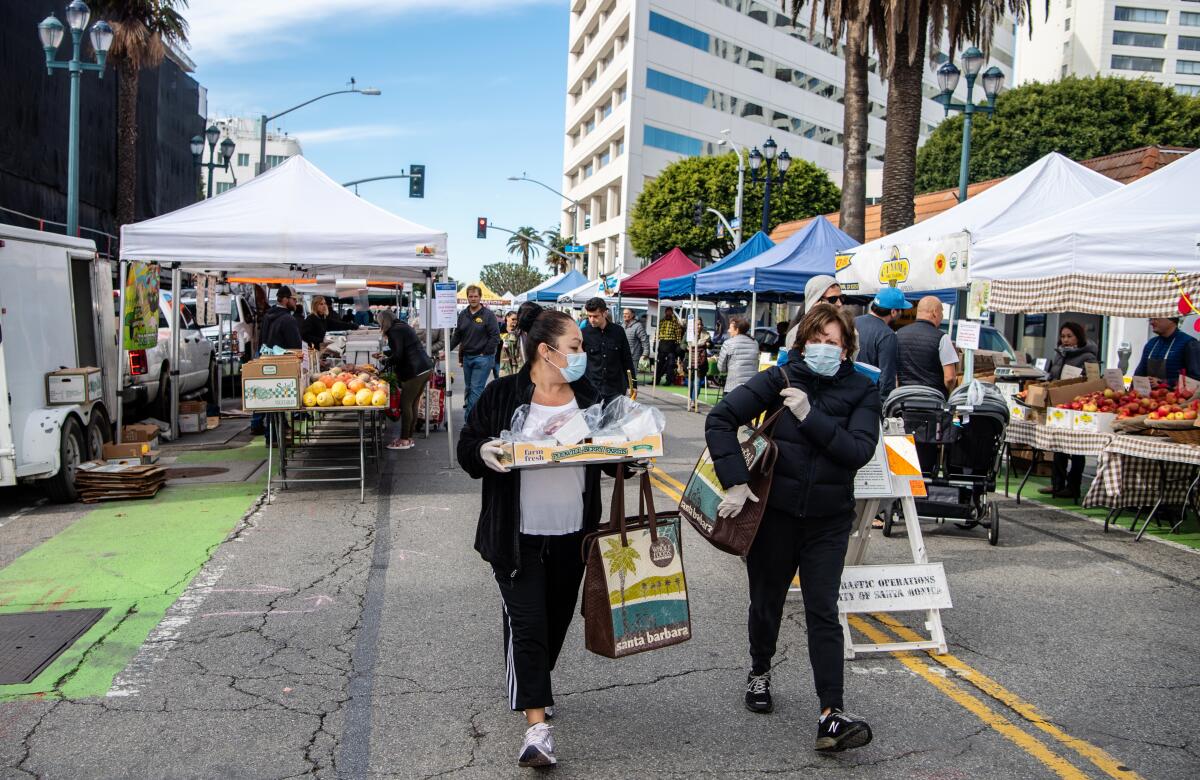
Posted signs implored customers to maintain social distancing of at least six feet at all times.
Jaclyn Rivera-Krouse and Christine Pagtalunan, two of the market’s managers, patrolled aisles vigilantly, dispersing small groups as they formed.
Paul Wysocan, a Westwood resident and market regular, said while the distancing policies seemed “surreal,” his shopping experience was relatively close to normal. “It was a relief to see that everything was available.”
During mandated dine-in closures, these restaurants are offering takeout and delivery as the coronavirus pandemic keeps Los Angeles close to home.
“I’ve been impressed with how well-coordinated it’s been with all that’s been going on,” Tony Ayala of Friend’s Ranch said. “Some of the other markets I’ve sold at this week, people weren’t as good about respecting the social distance.”
After markets were suspended in Culver City, Beverly Hills and Torrance, there was concern Santa Monica and other farmers markets would meet the same fate. Ayala was happy to learn that L.A. County had designated outdoor farmers markets essential to the public, kept open to ensure fresh food is available.
“I feel it’s much safer to shop here than in some of the supermarkets that are so crowded,” he said, unpacking a box of pale green Pinkerton avocados. “Here you have the open air, and there’s room to spread out.”
Steve Murray Jr., a sixth-generation grower at Murray Family Farms in Bakersfield, said customers bought more than usual at the downtown Santa Monica market on Saturday, but he expected sales to level out once stockpiling subsided.
Murray is concerned about his upcoming cherry harvest: The almost-ripe fruit needs to be picked quickly over the next few weeks and the availability of seasonal labor is limited. “I’m not sure how we’re going to get the manpower,” he said, adjusting his ivory-colored cowboy hat.
As farmers chatted among themselves about what the coming weeks would look like, all were consistent in saying there would be little to no interruption in their supply. Trees were full of fruit; trucks and vans would still be stocked and sent.
Romeo Coleman of Coleman Farms said that wholesale orders from L.A. restaurants, the bulk of his business, had dropped by 80% this week. He didn’t expect that number to improve in the weeks ahead.
“If we’re going to get through this, it’s going to be from people shopping at the market,” he said, looking over crates of purple-flecked lettuce stacked near his truck.
Other farms are shifting their model entirely. County Line Harvest in the Coachella Valley partnered with L.A. restaurants and bakeries to launch a CSA program that would distribute and deliver produce directly to subscribers; farm employee Danielle Mantua said they had 500 orders in its first few days.
Lia Skoblov, a Santa Monica resident who lived through food shortages in the Soviet Union during the 1990s, was there to shop for her elderly parents. She said she was concerned about price gouging and panic buying before arriving at the market.
Thankfully, she said, she found neither — just the beets and greens she needed to prepare that evening’s dinner.
More to Read
Eat your way across L.A.
Get our weekly Tasting Notes newsletter for reviews, news and more.
You may occasionally receive promotional content from the Los Angeles Times.
